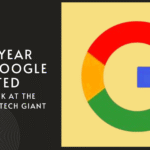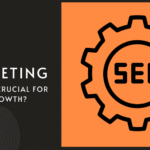In the evolving world of digital marketing, businesses often confuse SEO content strategy with content marketing. Although interconnected, they serve different purposes and require distinct approaches. Understanding these differences can help you craft a digital marketing strategy that generates sustainable results.
This article breaks down the unique functions, goals, and applications of both SEO content and content marketing. You’ll gain insights to optimize your content plan, improve brand visibility, and increase organic traffic.
What Is an SEO Content Strategy?
Defining SEO Content
An SEO content is a systematic plan for creating, optimizing, and publishing content designed to rank on search engines. It revolves around keyword research, user intent, and technical SEO best practices.
Core Components of an SEO Strategy
Key elements include on-page optimization, keyword targeting, content silos, internal linking structures, and performance analysis. These collectively work to boost your visibility on search engines and generate qualified organic traffic.
Why SEO Content Is Essential
Without a focused SEO content, your content may lack direction, making it harder for potential customers to find you via search engines. It’s the backbone of long-term organic success.
What Is Content Marketing?
Content Marketing Explained
Content marketing is the broader practice of creating and distributing valuable, relevant content to attract and retain a target audience. Its goal is to nurture leads, build trust, and drive profitable customer actions.
Formats and Channels
From blog posts and videos to infographics, social media, and webinars—content marketing takes many forms. Unlike an SEO content, it isn’t solely focused on rankings but on storytelling and relationship-building.
The Role of Content Marketing in the Customer Journey
Content marketing supports all stages of the funnel—awareness, consideration, and decision—using strategic content to guide users toward conversion.
SEO Strategy vs Content Marketing: The Key Differences
Purpose and Goals
SEO content focuses on visibility through search engine optimization, while content marketing aims to engage, inform, and convert. SEO drives discovery; content marketing drives decision-making.
Tactics and Tools
SEO content uses keyword research tools, technical audits, and SERP analysis. Content marketing, on the other hand, uses editorial calendars, customer personas, and campaign analytics.
Measurement of Success
SEO success is measured by rankings, CTR, and organic traffic. Content marketing success is gauged by engagement metrics, lead generation, and conversion rates.
How SEO Supports Content Marketing
Driving Organic Traffic
A solid SEO content helps your marketing content get discovered via search engines, expanding your reach without paid ads.
Enhancing Discoverability and Indexing
Properly structured SEO ensures that Google indexes your content efficiently, making it easier for users to find your most relevant blog posts or guides.
Leveraging Evergreen SEO Content
SEO-optimized evergreen content continues to bring traffic over time, giving your content marketing campaigns long-lasting momentum.
Aligning SEO Content Strategy with Content Marketing Goals
Creating a Unified Content Plan
When SEO and content marketing teams collaborate, you create a cohesive content plan that serves both user needs and algorithmic preferences.
Maintaining Brand Voice Across Channels
Whether writing for SEO or storytelling in content marketing, a consistent voice builds trust and reinforces brand identity.
Balancing Technical SEO and Creative Content
It’s crucial to balance optimization with compelling storytelling. Over-optimization can alienate users, while poor SEO wastes great content.
Common Misconceptions and Mistakes
Mistaking SEO for Just Keywords
SEO is not just about inserting keywords—it involves structure, intent alignment, and technical soundness.
Believing Content Marketing Doesn’t Need SEO
Content marketing without SEO risks going unnoticed. Every piece of content should be optimized to maximize visibility and impact.
Overlooking Analytics
Failing to track performance data undermines both SEO and content marketing. Tools like Google Analytics and Search Console are essential to refine your strategy.
Building a Successful SEO Content
Keyword Research and Mapping
Start with intent-based keyword research. Map target terms to specific content types and funnel stages to ensure relevance and SEO value.
Content Structuring and Interlinking
Use topic clusters and internal links to guide users through related content, improving engagement and dwell time.
Updating and Refreshing Content
Keep your SEO content current by revisiting older content. Refresh stats, update links, and align with algorithm updates.
Content Marketing Best Practices That Complement SEO
Know Your Audience
Create content that resonates by developing detailed buyer personas. Personalization increases relevance and engagement.
Use a Multi-Channel Approach
Amplify reach by promoting SEO-optimized content through email, social media, and influencer collaborations.
Prioritize Quality Over Quantity
A few well-optimized, high-quality pieces can outperform dozens of poorly written ones. Quality boosts trust and SEO authority.
The Role of Content Types in SEO Strategy vs Content Marketing
Content Types That Power SEO
SEO content typically focuses on content types that rank well on Google—such as blog posts, pillar pages, how-to guides, FAQs, and landing pages. These formats allow for effective keyword targeting and indexing, playing a vital role in building organic traffic.
Content Types in Content Marketing
Content marketing embraces a wider variety of formats to engage different audience segments. This includes storytelling-based articles, videos, podcasts, ebooks, webinars, case studies, and newsletters. The goal here isn’t just ranking, but deepening brand loyalty.
Integrating Both Approaches
To bridge both strategies, businesses often create SEO-optimized cornerstone content, then support it with high-engagement formats like social videos or gated assets. This multi-layered approach enhances your digital marketing strategy while supporting lead generation.
Team Collaboration: SEO Specialists vs Content Marketers
Understanding Team Responsibilities
SEO specialists focus on analytics, search trends, and technical health. Content marketers concentrate on audience personas, tone of voice, and content experience. Collaboration between the two is essential to deliver content that ranks and resonates.
Workflows and Alignment
Misalignment between SEO and content marketing teams can lead to disjointed efforts. A streamlined content plan ensures SEO objectives (like keyword targeting and technical optimization) align with marketing goals (such as brand awareness and conversions).
Tools for Seamless Collaboration
Using shared platforms like Semrush, Trello, or ContentCal helps teams co-create a unified SEO content. Regular sync-ups, joint planning sessions, and performance reviews improve output quality and campaign impact.
User Intent: The Heart of Both Strategies
What Is User Intent in SEO?
User intent is the foundation of any SEO content. It determines what the user is actually looking for—be it informational, transactional, or navigational content—and guides keyword targeting accordingly.
Aligning Content Marketing with Intent
Content marketing must also address user intent to be effective. For example, storytelling formats work best at the top of the funnel, while comparison guides are ideal for bottom-of-the-funnel prospects ready to make a purchase decision.
Using Intent to Guide Content Creation
Understanding and applying user intent improves both SEO performance and content marketing engagement. It ensures your content plan delivers the right message, to the right person, at the right time in their journey.
Long-Term Value: SEO Content Strategy vs Content Marketing ROI
SEO Content as a Long-Term Asset
SEO content is a long-term investment. Well-optimized articles can continue driving organic traffic for months or even years, provided they’re maintained and refreshed regularly.
Content Marketing’s Branding Impact
Content marketing often produces results that are harder to measure but no less important—such as brand loyalty, community engagement, and thought leadership. These outcomes foster customer trust and long-term retention.
Balancing Short-Term and Long-Term Goals
A robust digital marketing strategy blends both approaches. While SEO content delivers search visibility and traffic, content marketing fosters brand perception and user loyalty—together, they drive sustainable ROI.
Conclusion: Merging SEO Content and Content Marketing for Success
The Ideal Digital Marketing Strategy
A winning approach combines the precision of SEO content with the emotional connection of content marketing. Together, they create content that is discoverable, engaging, and impactful.
Final Thoughts
Understanding the difference between SEO content and content marketing empowers you to invest wisely in your digital efforts. Treat them as partners, not competitors.




